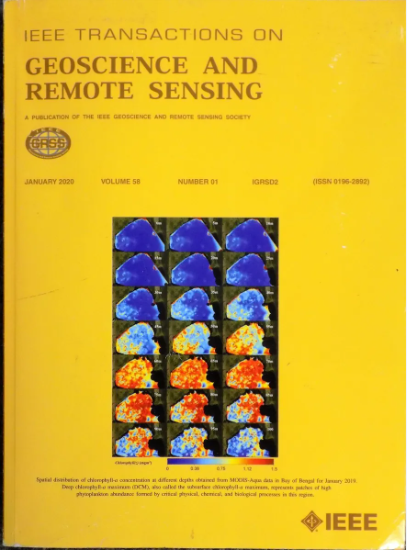Feature Preservation and Shape Cues Assist Infrared Small Target Detection
IF 7.5
1区 地球科学
Q1 ENGINEERING, ELECTRICAL & ELECTRONIC
IEEE Transactions on Geoscience and Remote Sensing
Pub Date : 2024-09-16
DOI:10.1109/TGRS.2024.3461795
引用次数: 0
Abstract
Infrared small target detection (ISTD) aims to segment small target pixels from infrared images and has extensive applications in many fields. Despite multiple progress, challenges remain as present methods still easily suffer from missed detection. Also, present methods are not sensitive enough to irregular target shapes. We argue that the main reason is that some informative small target features get lost during the aggressive downsampling in the encoder without effective recovery. In this article, we propose a new network with a dual-branch encoder-decoder structure for ISTD to address the two challenges. Specifically, to better preserve small target body features for more accurate target locations, we propose to maintain a relatively high resolution of feature maps in one encoder branch. For the other encoder branch, we gradually enlarge feature channels while shrinking resolutions and devise Perona-Malik diffusion (PMD) blocks to preserve shape cues inspired by the shape-preserving effect of PMD in denoising. The encoded high-resolution target body features and high-channel shape cues actually complement each other, so we design channel-resolution interact modules (CRIMs) to combine them. In the decoder, we propose orthogonal central difference fusion (OCDF) that relies on mining contrast differences to further refine shape-aware ISTD quality. Experiments on NUAA-SIRST and IRSTD-1k prove the superiority of our method.特征保存和形状线索辅助红外小目标探测
红外小目标检测(ISTD)旨在从红外图像中分割出小目标像素,在许多领域都有广泛应用。尽管取得了多项进展,但挑战依然存在,因为目前的方法仍然容易出现漏检。此外,目前的方法对不规则的目标形状不够敏感。我们认为,主要原因是在编码器中进行强力降采样时,一些信息量小的目标特征会丢失,无法有效恢复。在本文中,我们为 ISTD 提出了一种具有双分支编码器-解码器结构的新网络,以解决这两个难题。具体来说,为了更好地保留小目标体特征以实现更精确的目标定位,我们建议在一个编码器分支中保持相对较高的特征图分辨率。对于另一个编码器分支,我们在缩小分辨率的同时逐步扩大特征通道,并设计了佩罗纳-马利克扩散(PMD)块来保留形状线索,其灵感来自去噪中的形状保留效应。编码的高分辨率目标体特征和高信道形状线索实际上是相辅相成的,因此我们设计了信道分辨率交互模块(CRIM)来将它们结合起来。在解码器中,我们提出了正交中心差分融合(OCDF),依靠挖掘对比度差异来进一步提高形状感知 ISTD 质量。在 NUAA-SIRST 和 IRSTD-1k 上的实验证明了我们方法的优越性。
本文章由计算机程序翻译,如有差异,请以英文原文为准。
求助全文
约1分钟内获得全文
求助全文
来源期刊

IEEE Transactions on Geoscience and Remote Sensing
工程技术-地球化学与地球物理
CiteScore
11.50
自引率
28.00%
发文量
1912
审稿时长
4.0 months
期刊介绍:
IEEE Transactions on Geoscience and Remote Sensing (TGRS) is a monthly publication that focuses on the theory, concepts, and techniques of science and engineering as applied to sensing the land, oceans, atmosphere, and space; and the processing, interpretation, and dissemination of this information.
 求助内容:
求助内容: 应助结果提醒方式:
应助结果提醒方式:


